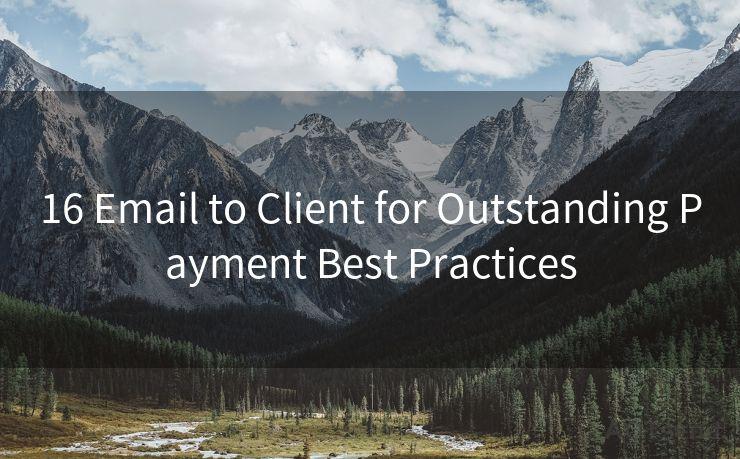16 Email to Client for Outstanding Payment Best Practices




When it comes to managing client payments, effective communication is key. Sending a professional and polite email reminder for outstanding payments can be a delicate task. Here are 16 best practices to follow when emailing clients about unpaid invoices.
1. Clear Subject Line
Start with a clear and direct subject line that immediately identifies the purpose of the email, such as "Reminder: Invoice #[Invoice Number] Payment Due."
2. Friendly Greeting
Open the email with a friendly greeting, using the client's name if possible. This helps to personalize the message and establish a warmer tone.
3. Invoice Details
Provide the specific invoice number, date, and the total amount due. Include a link or attachment to the original invoice for easy reference.
4. Payment Status
Clearly state the current payment status, mentioning the due date and any late fees that may apply.
5. Polite Reminder
Politely remind the client of the outstanding payment, emphasizing the importance of timely payment for the continuation of services or product delivery.
6. Payment Options
Offer multiple payment options to accommodate different client preferences, such as online payment gateways, bank transfers, or even checks.
7. Clear Call to Action
Include a clear call to action, asking the client to make the payment as soon as possible and providing instructions on how to do so.
8. Contact Information
Provide your contact information in case the client has any questions or concerns regarding the payment.
9. Thank You Note
Thank the client for their attention to this matter and express appreciation for their business.
🔔🔔🔔
【AOTsend Email API】:AOTsend is a Managed Email Service for sending transactional emails. Support Email Types: reminders, authentication, confirmations, notifications, verification codes, invoices, password resets, account activations, billing statements, two-factor authentication (2FA), and one-time passwords (OTP) emails, etc. $0.28 per 1000 Emails. 99% Delivery, 98% Inbox Rate.
You might be interested in:
Why did we start the AOTsend project, Brand Story?
What is a Managed Email API, How it Works?
Best 25+ Email Marketing Platforms (Authority,Keywords&Traffic Comparison)
Best 24+ Email Marketing Service (Price, Pros&Cons Comparison)
Email APIs vs SMTP: How they Works, Any Difference?
10. Avoid Threatening Language
Maintain a positive and constructive tone throughout the email, avoiding any language that could be interpreted as threatening or accusatory.
11. Follow-Up Plan
Mention a follow-up plan if payment is not received by a certain date, ensuring transparency and a sense of urgency without being aggressive.
12. Use Templates Wisely
While templates can save time, customize the email enough to maintain a personal touch and avoid sounding robotic or impersonal.
13. Check Grammar and Spelling
Proofread your email carefully to avoid any grammar or spelling errors that could detract from your professionalism.
14. Consider Timing
Be mindful of when you send the email. Avoid sending reminders during holidays, weekends, or late at night.
15. Keep It Brief
Stick to the point and keep the email brief. Long-winded emails are less likely to be read and understood.

16. Follow Up
If no response is received after a reasonable period, send a polite follow-up email or consider making a phone call.
Remember, the goal is to maintain a positive relationship with the client while ensuring timely payments. By following these best practices, you can effectively communicate with clients about outstanding payments without damaging the business relationship.
Incorporating these 16 best practices into your email communication strategy for outstanding payments will help you maintain professionalism, clarity, and politeness, ultimately leading to a more efficient and effective payment process.




Scan the QR code to access on your mobile device.
Copyright notice: This article is published by AotSend. Reproduction requires attribution.
Article Link:https://www.mailwot.com/p6850.html



